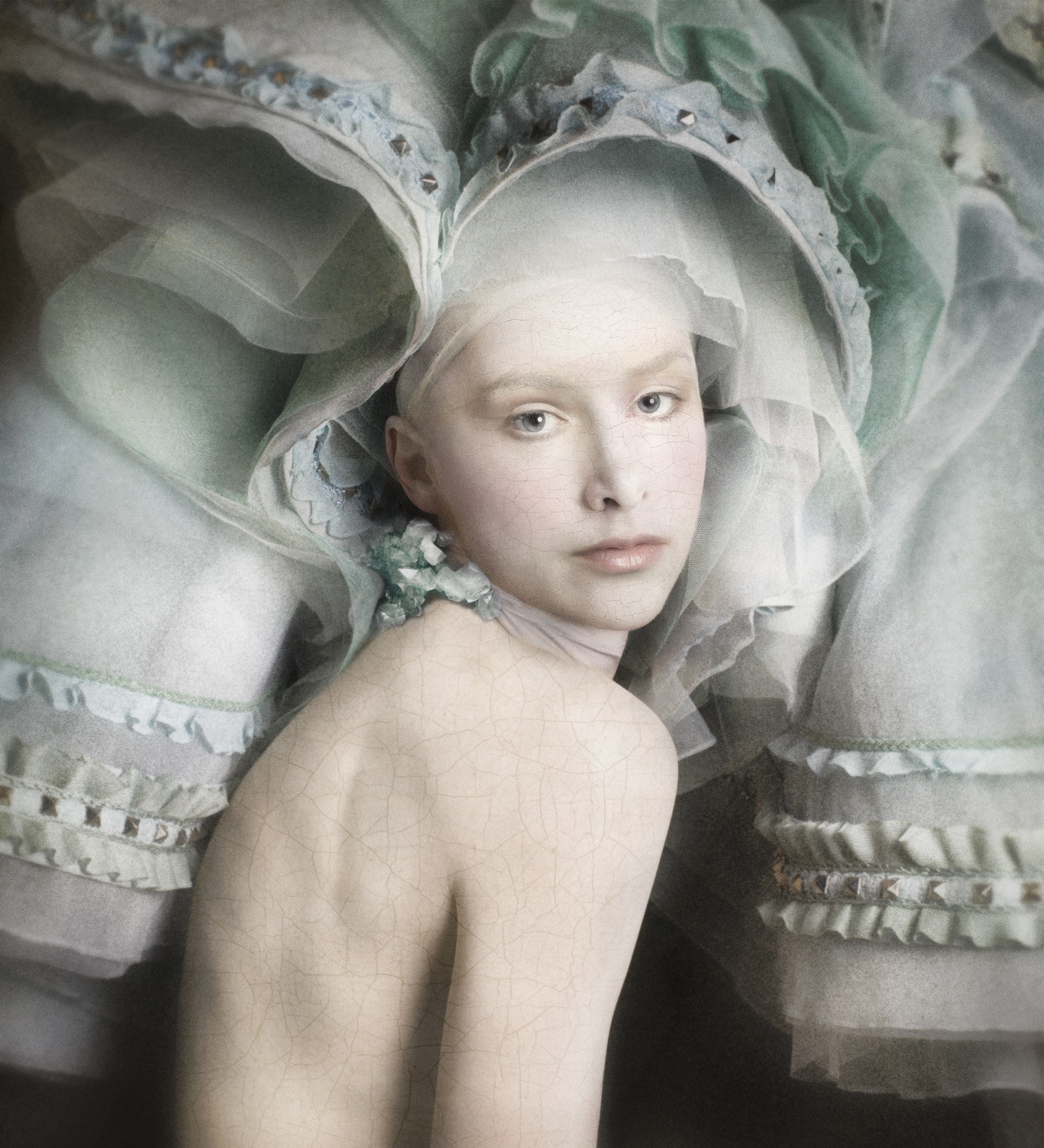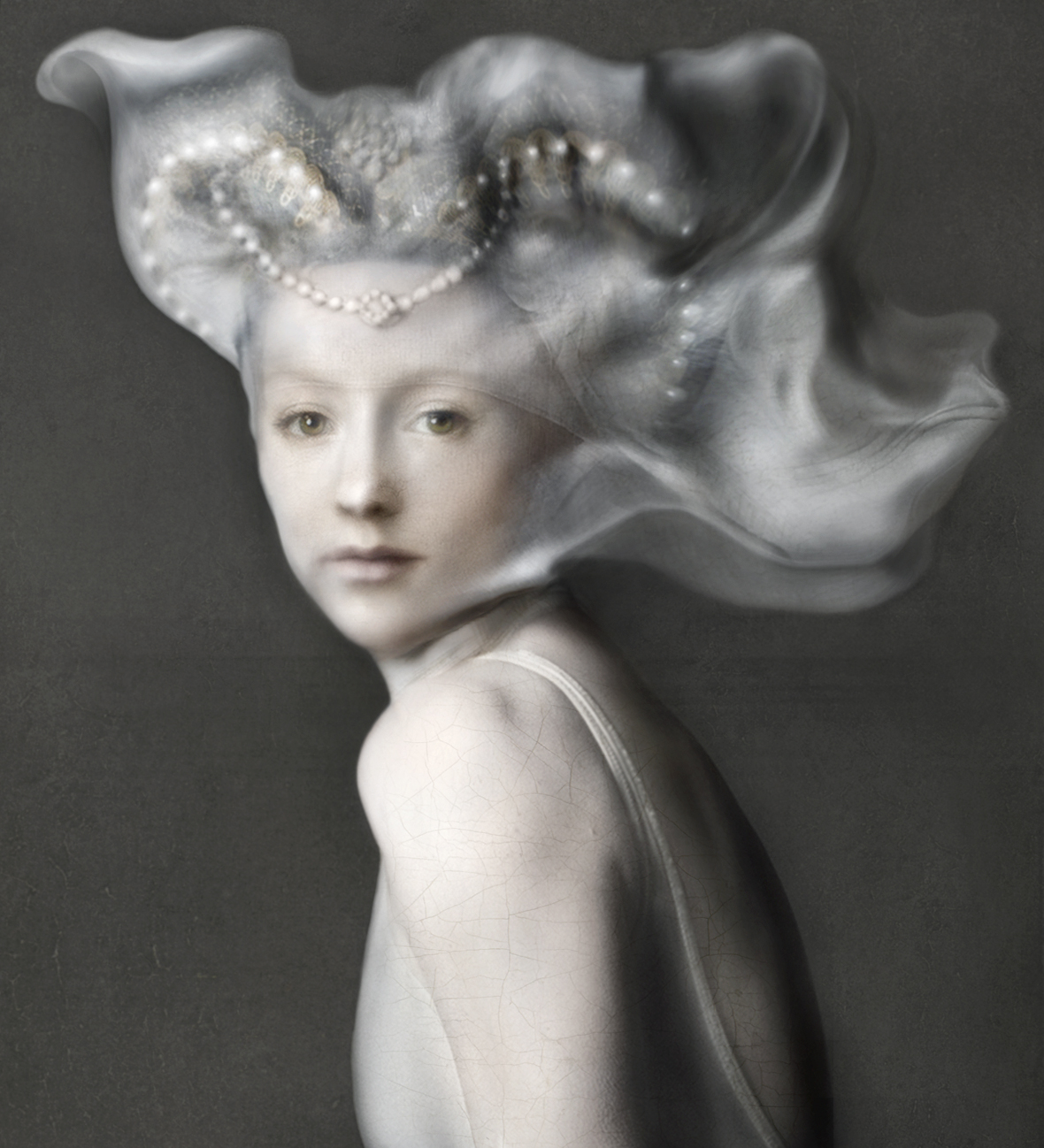Isabelle van Zeijl
Interview by Ruth Millington
-
Published in January 2023
-
Throughout art history, women artists – from Artemisia Gentileschi to Frida Kahlo – have defiantly framed themselves as their own muse to disrupt dominant narratives, question gender stereotypes, explore their identity and heal themselves. Taking up this mantle today is Dutch photographer Isabelle Van Zeijl: having experienced first-hand sex-based prejudice, objectification and violence, she redefines feminine power through her lens, acting as survivor, artist and subject.
Van Zeijl spoke with art historian and author Ruth Millington about her striking photographic self-portraits, which will be on show as part of ‘Reframing the Muse’ at London Art Fair 2023.
-
Tell me little about yourself? What’s your background, how long have you been a photographer and when did you create your first self-portrait?
As a young girl I wanted to become an actress, but I had to quit acting classes because I lost my voice as a result of all the violence, belittling and abuse I was exposed to. I couldn’t' speak for months, so I started to speak through my art, and my art became my voice.
In order to survive troubled times, I turned my eye towards all that what was beautiful around me. Beauty became my mask, my armor, and my purifier. I have always made self portraits as a means of maintaining a connection with myself, my true essence. My creative practice became my anchor, my life-force.

I Love Her I, 2019. C-print mounted on Dibond, Perspex face in tray frame. Framed: 113 x 103.1 cm
Your self-portraits are both refreshingly contemporary, while clearly referencing old master paintings, such as Vermeer’s ‘Girl with a Pearl Earring’. Dressing yourself in a rich symbolism of flowers, pearls, veils, chiffon and ruffs, can you share a bit about your interest in art history and desire to reinvent historic female archetypes?
I grew up in The Netherlands, in a highly creative family surrounded by books on art history, architecture, and also contemporary fashion magazines. I absorbed everything, all the images of the models, both in the books and in the magazines. As a young girl these beauty ideals had a huge impact on my self image. I was fascinated by the strength the models radiated: their powerful gazes, their strong poses. They represented some sort of freedom to me.

Girl with a Pearl Earring by Johannes Vermeer, 1665
It must be challenging to shoot self-portraits – can you tell me about your process? Do you have any help setting this up? What different roles are required of you?
I am the photographer, hair and make up artist, stylist, editor and even my own model. I am the object and the subject. It’s a one woman show. Self-taught, my creative process is born out of limitations. For years I thought I wasn’t good enough to hire a team to help me. I have spent hours alone in my studio. I worked in solitude as an artist. I believe innovators and creators are persons who can, to a higher degree than average accept the condition of aloneness, they are more willing to follow their own vision. Even when it takes them far from from the mainland of the human community. My anxiety, to whatever extent it exists, doesn’t deter me. One of the most important forms of heroism, is the heroism of consciousness, the willingness to tolerate aloneness. We all have unlimited potential: we can be or do whatever we see for ourselves. It all starts with taking the first step into the unknown.
Although performative by nature, these are also clearly deeply personal images, which beautifully communicate both vulnerability and strength. I know you have experienced sex-based prejudice, objectification and violence. What gave you the courage to not only make, but publicly share, photographs with this story?
It all started with questioning myself, what human being do I need to forge myself into to make a change in the world? How can I use my burden to bring light into the world? So I started to share my true story, and by sharing my story, I learned about the impact of my work by the people who took my work into their homes, and surrounded themselves with beauty. My art is included in numerous collections all over the world. People then start sharing their personal stories with me, including how much my work encouraged them to live day-to-day, meet their highest possible potential, restored their faith in themselves or empowered their self-esteem.
By sharing my stories, I invite people to open up a little bit more to each other, and share their real stories, it will make a valuable impact on one’s life. And in order to do so, you have to believe that your story has value, dare to be vulnerable. That takes courage, the courage to connect.
As the viewer might recognize in my earlier works, the woman in the picture looks fierce, strong and is wearing an armor. In my later portraits, the woman has become softer, the gaze more inviting instead of defensive. It has been a process of evolving this softness in myself to open up, to let go of that armor, and reveal the soft, vulnerable side of myself again. I always had to show up strong, I now embrace the soft, loving and kind traits in myself and others.

Reveal Me, 2021. C-print mounted on Dibond, Perspex face in tray frame. Framed: 113 x 102.9 cm
Your photographs remind me of the paintings of 17th-century artist Artemisia Gentileschi, who used art to rebel against repression and injustice. She made self-portraits in a powerful act of control, after being raped by a friend of her father’s. In works such as ‘Self-Portrait as the Allegory of Painting’ she seems to take possession of her own body, existing on a higher plane. What impact has visual self-representation had on your own sense of identity, confidence and well-being? Do you feel untouchable in your self-portraits?
I definitely do. When I photograph myself, I am totally focused, I am in the present moment and I become one with it. I use my body to represent power in both physical and spiritual ways. The naked body plays a role in depicting the power over my own body, but it also acts as a doorway to connect with your own inner strength. To become one with your body and soul.

Self-Portrait as the Allegory of Painting by Artemisia Gentileschi, 1638-9
Some of the earliest art that survives depicts the human body, with a focus on idealized female beauty. And female beauty ideals have been hammered out almost exclusively by men. The body is a subject that has endured over centuries, it is revisited over and over in contemporary art. My body is my canvas, it is my subject and object; the viewer and creator are one, in this case a female person. To have power over one’s own body has been an important aspect of art. I have the power to choose the fate of my own body over the decisions of (largely male) medical specialists. Or the industries that have fed on the ideals of physical beauty and highlighted that lengths to which people have gone to achieve that ideal from the employment of make-up or dieting to more extreme measures of cosmetic surgery and self starvation.

I Am II, 2019. C-print mounted on Dibond, Perspex face in tray frame. 113 x 103.1 cm
You also seem focused on redefining and reframing beauty with your female gaze. We live in a society where a woman’s beauty is bound by external and often unrealistic expectations of femininity, and yet at the same time we are condemned for focusing too much on our appearance. What do you want viewers (especially other women) to take away from your images?
When becoming a woman I learned that the fashion industry creates role models for us. They dictate how we should look, how we should dress, how to act, how to react and how to express ourselves. But this beauty ideal is far too oppressive for young girls. In reality, this has nothing to do with beauty. Without character and emotion there is no beauty. The fashion models in this industry are displayed as empty card- boards presenting beauty ideals women no longer serve.
We all face obstacles in life, by overcoming them with courage, we build resilience and true strength to me is when you find yourself in a crisis and to start again, to create something new. As human beings we want to be loved, be seen, and we want belonging. It is in our DNA. The opposite of belonging is ‘fitting in’. But true belonging, is belonging to yourself first, and that is what I found to be truly liberating; in fact, that was the freedom and safety I yearned for, it’s best described as a sense of wholeness.

Supermodel III, C-print mounted on dibond, perspex face in tray frame
-
Isabelle Van Zeijl is represented internationally by Cynthia Corbett Gallery. She will be exhibiting work as part of ‘Reframing the Muse’, an exhibition curated by Ruth Millington at London Art Fair 2023, which runs from 18-22 January.
-
isabellevanzeijl.com
︎ @isabellevanzeijl
ruthmillington.co.uk
︎ @millington_ruth
-
If you like this why not read our interview with Sofía Clausse.
-
© YAC | Young Artists in Conversation ALL RIGHTS RESERVED
